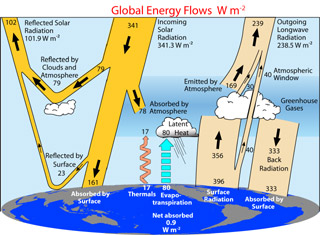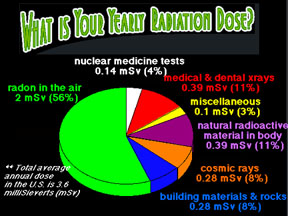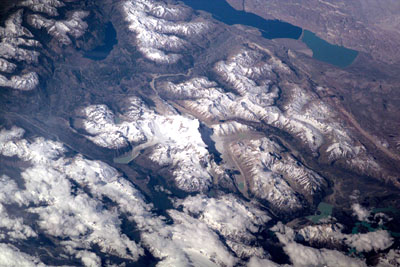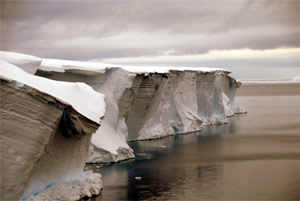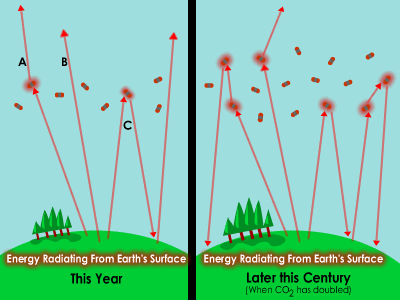Click on image for full size
Image courtesy of K. Trenberth, J. Fasullo, and J. Kiehl.
Earth's Radiation Budget
Light from the Sun shines on Earth. Some of that light reflects off clouds back into space. Some of the light makes it to the ground and warms our planet. The warm ground and oceans give off infrared (IR) radiation, which we feel as heat. That IR "light" moves back up through the atmosphere. Most of it is trapped by greenhouse gases, which keep Earth warm. After a while, the IR radiation leaks back out into space. This cycle of incoming and outgoing energy is called "Earth's radiation budget" by scientists.
The picture on this page shows a lot of details about Earth's radiation budget. This kind of radiation isn't the kind from atom bombs or nuclear power plants. Instead, it is electromagnetic radiation. It is mostly visible light and infrared radiation.
Less than half of the sunlight heats the ground. Some of the rest is reflected away by bright white clouds or ice. Some gets absorbed by the atmosphere. The warm ground gives off IR radiation. The right side of the picture shows that. Our atmosphere has greenhouse gases in it. They let normal light pass through, but trap IR "light". It is sort of like having a blanket covering Earth. Our planet would be about 30° C (54° F) colder if there wasn't a greenhouse effect! After a while, the IR "light" slowly leaks back out into space.
For the most part, the same amount of energy comes in (to Earth) and goes out (to space). If it didn't, Earth would heat up or cool down. These days the balance is a little off. Humans have added lots of greenhouse gases to the atmosphere. Earth's climate is slowly warming up. That's why scientists are really interested in Earth's radiation budget. It helps them understand global warming.


